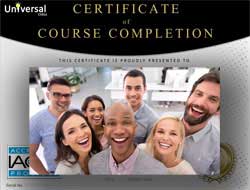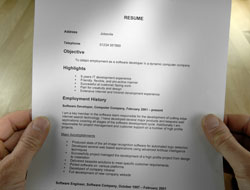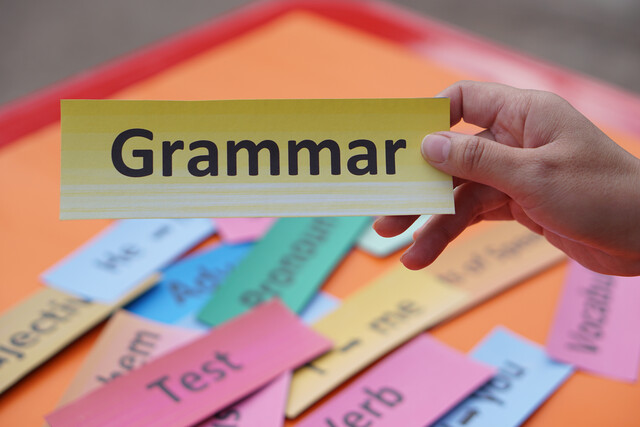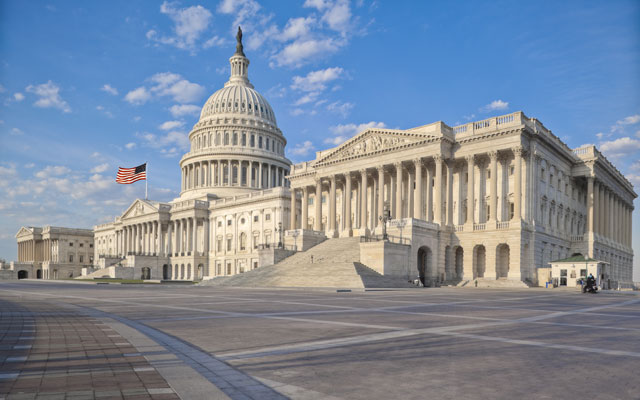Online Class: American Heroes and Villains

-
14Lessons
-
22Exams &
Assignments -
8Hours
average time -
0.8CEUs
Course Description
America's Pantheon of Heroes and Villains
Every epoch has its marquee names that transcend the annals of history--individuals whose deeds, for better or worse, shape the contours of their nation's saga. The United States, with its rich tapestry of narratives, is no exception. From paragons of virtue to those who danced with their darker selves, the U.S. landscape is peppered with figures who have punctuated its story, leaving indelible marks. But what alchemy of fate, choices, and national zeitgeist elevates someone into the realm of household recognition?
Dive deep into "American Heroes and Villains" to embark on an illuminating journey, one that delves into the intricate interplay of personal choices and societal context. What distinguishes George Washington's statesmanship from Charles Manson's notoriety? How do individuals like Jesse James, a legendary outlaw, and Linus Pauling, a groundbreaking scientist, find themselves immortalized in America's collective psyche?
Our course is not merely a parade of biographies. Instead, it's an exploration, an excavation of the underlying currents that cast certain individuals into the spotlight. Beyond a mere recounting of their lives, we unravel the complex tapestry of historical, societal, and personal factors that enshrined them in the pantheon of American icons.
Through meticulously crafted modules, you will:
- Delve into captivating biographical overviews of America's luminaries and those who courted controversy.
- Engage in rich analyses, discerning what renders these individuals iconic in the vast tableau of American history.
- Understand the multifaceted criteria underpinning the rise (or fall) of these personas in the nation's consciousness.
As we navigate the nuanced terrains of heroism and infamy, this exciting course promises to be more than just a history lesson. It's an invitation to a deeper understanding of the American ethos and the myriad personalities that have sculpted it.
Join us, as we unveil the tales of those who've touched the very soul of America, weaving its narrative of greatness, grit, light, and shadow.
- Business
- Business Ethics Courses
- Harassment Prevention Courses
- Human Resources Certifications
- Management
- Aromatherapy Courses
- Caregiver Courses
- Career Development Courses
- Communications Courses
- Confidence and Self Esteem Courses
- Healing
- Human Anatomy Courses
- Medical Skills
- Health & Medicine
- Nutrition
- Marketing
- Microsoft Office Certification Courses
- Life Coaching Courses
- Self-Improvement
- Small Business Certifications
- Safety
- Writing Improvement
- Business Writing Courses
Course Lessons
Lesson 1. Heroes and Villains: An American Inquiry
 Lesson 1 Video
Lesson 1 Video Review Practice Worksheet: Lesson-1-Activity-14610.pdf
Review Practice Worksheet: Lesson-1-Activity-14610.pdf Lesson discussions: Reasons for Taking this Course
Lesson discussions: Reasons for Taking this Course Assessment: Lesson 1: An Introduction to America’s Heroes and Villains
Assessment: Lesson 1: An Introduction to America’s Heroes and Villains Assessment: Lesson 1 Review Exam
Assessment: Lesson 1 Review Exam
Lesson 2. Explorers Unveiled: The Men Who Mapped the New World
 Lesson 2 Video
Lesson 2 Video Review Practice Worksheet: Lesson-2-WordSearch-14613.pdf
Review Practice Worksheet: Lesson-2-WordSearch-14613.pdf Assessment: Lesson 2: Early America
Assessment: Lesson 2: Early America Assessment: Lesson 2 Review Exam
Assessment: Lesson 2 Review Exam
Lesson 3. Pirates and Pioneers: Faces of the New World
 Lesson 3 Video
Lesson 3 Video Review Practice Worksheet: Lesson-3-Downloadable-14617.pdf
Review Practice Worksheet: Lesson-3-Downloadable-14617.pdf Assessment: Lesson 3: Colonial America
Assessment: Lesson 3: Colonial America Assessment: Lesson 3 Review Exam
Assessment: Lesson 3 Review Exam
Lesson 4. The Rise of American Identity
 Lesson 4 Video
Lesson 4 Video Review Practice Worksheet: Lesson-4-WorkSheet-14620.pdf
Review Practice Worksheet: Lesson-4-WorkSheet-14620.pdf Assessment: Lesson 4: Revolutionary America, Part I
Assessment: Lesson 4: Revolutionary America, Part I Assessment: Lesson 4 Review Exam
Assessment: Lesson 4 Review Exam
Lesson 5. Unsung Architects of Liberty: Heroes and Villains of Revolutionary America
 Lesson 5 Video
Lesson 5 Video Review Practice Worksheet: Lesson-5-WordSearch-14622.pdf
Review Practice Worksheet: Lesson-5-WordSearch-14622.pdf Assessment: Lesson 5: Revolutionary America, Part II
Assessment: Lesson 5: Revolutionary America, Part II Assessment: Lesson 5 Review Exam
Assessment: Lesson 5 Review Exam
Lesson 6. From Revolution to Republic: Trials and Triumphs
 Lesson 6 Video
Lesson 6 Video Review Practice Worksheet: Lesson-6-HomeWork-14627.pdf
Review Practice Worksheet: Lesson-6-HomeWork-14627.pdf Assessment: Lesson 6: The Young Republic
Assessment: Lesson 6: The Young Republic
Lesson 7. The Expansion and Reform Era: Heroes, Villains, Pioneers
 Lesson 7 Video
Lesson 7 Video Review Practice Worksheet: Lesson-7-Downloadable-14630.pdf
Review Practice Worksheet: Lesson-7-Downloadable-14630.pdf Assessment: Lesson 7: Expansion and Reform Era
Assessment: Lesson 7: Expansion and Reform Era Assessment: Lesson 7 Review Exam
Assessment: Lesson 7 Review Exam
Lesson 8. Rebuilding After Dismantling
 Lesson 8 Video
Lesson 8 Video Review Practice Worksheet: Lesson-8-Activity-14634.pdf
Review Practice Worksheet: Lesson-8-Activity-14634.pdf Assessment: Lesson 8: Civil War and Reconstruction
Assessment: Lesson 8: Civil War and Reconstruction Assessment: Lesson 8 Review Exam
Assessment: Lesson 8 Review Exam
Lesson 9. Legends and Innovators: Icons of the Wild West and Industrial Revolution
 Lesson 9 Video
Lesson 9 Video Review Practice Worksheet: Lesson-9-Activity-14638.pdf
Review Practice Worksheet: Lesson-9-Activity-14638.pdf Assessment: Lesson 9: The Wild West and the Second Industrial Revolution
Assessment: Lesson 9: The Wild West and the Second Industrial Revolution Assessment: Lesson 9 Review Exam
Assessment: Lesson 9 Review Exam
Lesson 10. World War I Personalities
 Lesson 10 Video
Lesson 10 Video Review Practice Worksheet: Lesson-10-HomeWork-14642.pdf
Review Practice Worksheet: Lesson-10-HomeWork-14642.pdf Assessment: Lesson 10: World War I
Assessment: Lesson 10: World War I
Lesson 11. Unsung and Infamous: Key Figures from WWII and the Korean War
 Lesson 11 Video
Lesson 11 Video Review Practice Worksheet: Lesson-11-HomeWork-14646.pdf
Review Practice Worksheet: Lesson-11-HomeWork-14646.pdf Assessment: Lesson 11: World War II and Korea
Assessment: Lesson 11: World War II and Korea
Lesson 12. Heroes and Villains: Influential Figures from the Post-War Era
 Lesson 12 Video
Lesson 12 Video Review Practice Worksheet: Lesson-12-HomeWork-14650.pdf
Review Practice Worksheet: Lesson-12-HomeWork-14650.pdf Assessment: Lesson 12: Post War to the End of the Century, Part I
Assessment: Lesson 12: Post War to the End of the Century, Part I
Lesson 13. Leaders and Legacies: A Look at Post-War Titans
 Lesson 13 Video
Lesson 13 Video Review Practice Worksheet: Lesson-13-HomeWork-14654.pdf
Review Practice Worksheet: Lesson-13-HomeWork-14654.pdf Assessment: Lesson 13: Post War to the End of the Century, Part II
Assessment: Lesson 13: Post War to the End of the Century, Part II
Lesson 14. The New Millennium's Dynamic Personalities
 Lesson 14 Video
Lesson 14 Video Review Practice Worksheet: Lesson-14-Downloadable-14657.pdf
Review Practice Worksheet: Lesson-14-Downloadable-14657.pdf Lesson discussions: End of Course Poll; Reasons for Taking this Course; Course Comments
Lesson discussions: End of Course Poll; Reasons for Taking this Course; Course Comments Assessment: Lesson 14: The New Millennium
Assessment: Lesson 14: The New Millennium
Learning Outcomes
- Describe the impact of historical era on individual behavior as discussed in the course.
- Identify key psychological factors that contribute to people becoming recognized as heroes or villains in American history.
- Define the key contributions of Amerigo Vespucci, Christopher Columbus, Henry Hudson, and John Cabot to the exploration of the New World.
- Evaluate differing historical perspectives regarding the heroism or villainy of early European explorers in the context of American history.
- Demonstrate understanding of the impact of key historical figures by summarizing their contributions to Colonial America.
- Identify and differentiate between the roles and actions of notable heroes and villains during the Colonial American period.
- Analyze the impact of Benedict Arnold's defection on American morale and the revolutionary cause during the American Revolutionary War.
- Recognize the contributions of key figures in Revolutionary America by identifying their roles and actions during the period 1763–1783.
- Compare the policies of King George III and Lord Frederick North and evaluate their impact on the American Revolutionary War.
- Identify the key contributions of John Adams to the American Revolution, including his role in the Declaration of Independence.
- Describe the impact of Shays' Rebellion on the development of federal laws and the stability of the early United States government.
- Identify and compare the political contributions of key figures in early American history, including Alexander Hamilton, Aaron Burr, and Thomas Jefferson.
- Recognize the impact of key figures from the Expansion and Reform Era on American politics and society, by identifying their roles and contributions.
- Demonstrate mastery of lesson content at levels of 70% or higher.
Additional Course Information

- Document Your Lifelong Learning Achievements
- Earn an Official Certificate Documenting Course Hours and CEUs
- Verify Your Certificate with a Unique Serial Number Online
- View and Share Your Certificate Online or Download/Print as PDF
- Display Your Certificate on Your Resume and Promote Your Achievements Using Social Media

Student Testimonials
- "I loved the instructor videos, giving information and talking about time frames and the topic we were currently learning about." -- Angela C.
- "Excellent instructor." -- Deborah D.
- "The instructor is very knowledgeable." -- Judy R.
- "This was a FANTASTIC course! I learned so much that I didn't even know I was interested in. The best part was being able to pick which hero or villain you could write about. In figuring out which one to write about, I learned a tremendous amount about the other people in the assignments." -- Donna N.
- "Instructor McKenna was well equipped to handle questions I had" -- Randall M.
- "Mac was an excellent instructor, very interactive. I hope to run into him again." -- L T.
Related Courses
-
 7 hours
0.7 CEUs
Securing Your Data and Privacy
+ More Info
7 hours
0.7 CEUs
Securing Your Data and Privacy
+ More Info
-
 11 hours
1.1 CEUs
English Grammar Level 1
+ More Info
11 hours
1.1 CEUs
English Grammar Level 1
+ More Info
-
 7 hours
0.7 CEUs
Data Analysis for Business
+ More Info
7 hours
0.7 CEUs
Data Analysis for Business
+ More Info
-
 7 hours
0.7 CEUs
Speed Writing 101
+ More Info
7 hours
0.7 CEUs
Speed Writing 101
+ More Info
-
 9 hours
0.9 CEUs
Party Planning 101
+ More Info
9 hours
0.9 CEUs
Party Planning 101
+ More Info
-
 3 hours
0.3 CEUs
Job Performance Appraisals - A How To Guide
+ More Info
3 hours
0.3 CEUs
Job Performance Appraisals - A How To Guide
+ More Info




